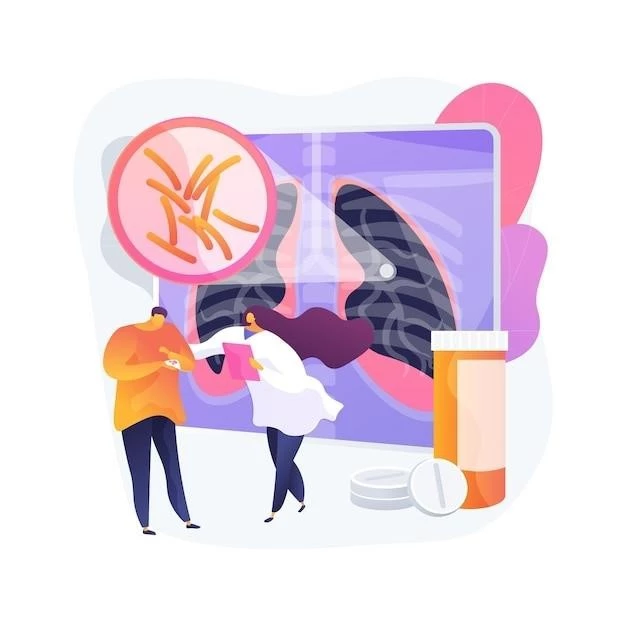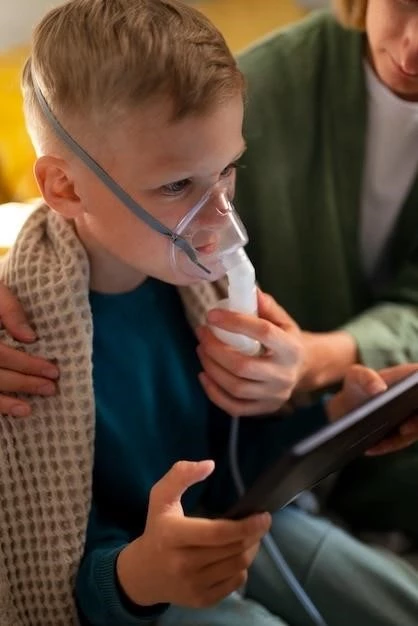Introduction to Pneumonic Plague
Pneumonic plague is the most serious form of plague‚ causing severe pneumonia leading to symptoms like shortness of breath‚ chest pain‚ and bloody or watery mucous. It is highly contagious through person-to-person transmission via infectious droplets‚ necessitating immediate antibiotic treatment to prevent fatalities.
Definition and Severity
Pneumonic plague is characterized by a severe and rapidly developing pneumonia‚ resulting in symptoms like fever‚ headache‚ weakness‚ and respiratory distress. The severity of pneumonic plague lies in its high fatality rate if left untreated‚ with most individuals succumbing to the disease within days of onset. Immediate diagnosis and antibiotic treatment are crucial to prevent complications and fatal outcomes.

Overview of Plague Disease
Pneumonic plague is the most severe form of this disease‚ characterized by a rapidly progressing pneumonia leading to respiratory failure. It is highly contagious and can spread from person to person‚ posing a significant public health threat.
Historical Context
Pneumonic plague has a long history of causing devastating pandemics throughout the centuries. One of the most infamous instances is the Black Death in Europe during the Middle Ages‚ where millions succumbed to the disease. The pneumonic form of plague has been a significant threat due to its rapid progression to severe pneumonia and high fatality rates if left untreated;
Types of Plague Syndromes
Plague manifests in various forms‚ with bubonic‚ septicemic‚ and pneumonic plague being the primary syndromes caused by the Yersinia pestis bacterium. While bubonic plague affects the lymph nodes‚ septicemic plague involves blood infection‚ and pneumonic plague leads to severe pneumonia and respiratory distress.
Cause and Transmission of Pneumonic Plague
Pneumonic plague is caused by the Yersinia pestis bacterium and can be transmitted through the inhalation of infectious droplets containing the bacteria. Person-to-person spread is a rare but significant route of transmission.
Yersinia Pestis Bacterium
The Yersinia pestis bacterium is responsible for causing pneumonic plague‚ a severe respiratory infection. This bacterium can be transmitted through the inhalation of infectious droplets containing the bacteria‚ leading to the rapid onset of symptoms and potentially fatal outcomes if left untreated.
Person-to-Person Spread
Pneumonic plague can rarely spread from person to person through infectious droplets containing Yersinia pestis. This form of transmission poses a serious public health risk due to its potential to cause outbreaks if not promptly identified and treated.
Symptoms and Diagnosis
Pneumonic plague presents with symptoms like fever‚ headache‚ weakness‚ shortness of breath‚ chest pain‚ and bloody or watery mucous. Diagnosis involves identifying these rapid onset symptoms and differentiating them from other forms of the plague.
Rapid Onset Symptoms
The symptoms of pneumonic plague develop rapidly‚ typically within a few hours to a few days after exposure to the bacterium Yersinia pestis. Patients may experience fever‚ headache‚ weakness‚ and respiratory symptoms like shortness of breath‚ chest pain‚ and coughing‚ often accompanied by bloody or watery mucous. Early recognition and prompt treatment are crucial in managing this severe respiratory infection.
Differentiation from Bubonic Plague
While bubonic plague primarily affects the lymph nodes‚ pneumonic plague targets the lungs‚ causing severe pneumonia and respiratory failure. The rapid onset and progression of symptoms distinguish pneumonic plague from the bubonic form‚ necessitating specific diagnostic and treatment strategies to combat this life-threatening infection.
Treatment and Management
Prompt antibiotic treatment is crucial to manage pneumonic plague effectively‚ reducing the risk of complications and fatalities. Learn more about the symptoms‚ diagnosis‚ and treatment protocols from reputable health organizations like the CDC.
Importance of Prompt Treatment
Immediate and appropriate medical intervention is crucial in the treatment of pneumonic plague to prevent severe complications and fatalities. Recognizing the symptoms early and initiating antibiotic therapy can significantly improve the prognosis and reduce the risk of transmission to others. Learn more about the importance of timely treatment from reputable health sources.
Antibiotics and Therapeutic Approaches
Antibiotics are the cornerstone of treating pneumonic plague‚ with drugs like streptomycin‚ gentamicin‚ or doxycycline being commonly used. Prompt initiation of antibiotic therapy is essential to curb the progression of the disease and prevent severe complications. Understanding the recommended therapeutic approaches and proper antibiotic administration is critical in managing pneumonic plague effectively. Consult healthcare professionals for accurate guidance on antibiotic treatment protocols for pneumonic plague.
Prognosis and Complications
Pneumonic plague can lead to potential fatal outcomes within days if not promptly treated. Additionally‚ the development of respiratory failure poses a severe complication in patients with this form of the disease.
Potential Fatalities
Pneumonic plague can result in potential fatalities within days if not promptly treated‚ leading to severe respiratory complications and‚ in some cases‚ respiratory failure. Understanding the potential dangers and outcomes of untreated pneumonic plague is essential in emphasizing the importance of early diagnosis and intervention to prevent adverse consequences.
Development of Respiratory Failure
Pneumonic plague‚ if untreated‚ can lead to respiratory failure and potential fatalities within days of onset. Understanding the severity and complications of this form of the disease is crucial for effective management and timely intervention.
Prevention and Control Measures
Pneumonic plague can be prevented and controlled through public health interventions such as early detection‚ isolation of infected individuals‚ contact tracing‚ and the implementation of respiratory precautions. Vaccination plays a crucial role in preventing the spread of the disease. Stay informed about prevention strategies and follow guidance provided by health authorities to mitigate the risks associated with pneumonic plague.
Public Health Interventions
Public health interventions play a critical role in preventing and controlling pneumonic plague. Key strategies include early detection‚ isolation of infected individuals‚ contact tracing‚ and implementing respiratory precautions to minimize the spread of the disease within communities. Regular updates and guidelines from health authorities are essential to effectively manage and contain outbreaks of pneumonic plague.
Role of Vaccination
Vaccination plays a crucial role in preventing the spread of pneumonic plague. Vaccines can stimulate the immune system to produce antibodies that protect against Yersinia pestis infection‚ reducing the risk of developing severe respiratory symptoms and potential fatality. Stay informed about vaccination recommendations and schedules provided by healthcare professionals and authorities to safeguard against pneumonic plague.

Research and Epidemiology
Pneumonic plague‚ caused by the bacterium Yersinia pestis‚ has a high infection rate and rapid progression‚ posing a significant public health threat today. Learn more about recent epidemics and studies‚ as well as genomic characterization‚ to understand the epidemiology and ongoing research efforts to combat this severe respiratory infection.
Recent Epidemics and Studies
In 2017‚ a significant epidemic of pneumonic plague occurred in urban areas of Madagascar‚ including Antananarivo and Toamasina. Epidemiological data and genomic characterization of Yersinia pestis were utilized to identify the sources and dynamics of this epidemic. Stay informed about the latest studies and outbreaks related to pneumonic plague to understand the evolving nature of the disease and inform public health responses.
Genomic Characterization
Recent studies have utilized genomic characterization of Yersinia pestis to understand the evolution and transmission dynamics of pneumonic plague outbreaks. The genetic analysis of strains has provided valuable insights into the epidemiology and pathogenesis of this severe respiratory infection‚ aiding in the development of targeted control measures and treatment strategies. Stay updated on genomic research findings to enhance preparedness and response to pneumonic plague incidents.
Global Impact and Incidence
Pneumonic plague‚ caused by the bacterium Yersinia pestis‚ has a significant global impact with high infection rates and rapid disease progression‚ highlighting the importance of prompt diagnosis and treatment to mitigate the spread and severity of this infectious respiratory illness.
Geographical Distribution
Pneumonic plague has been reported in various regions globally‚ with outbreaks occurring predominantly in areas where the Yersinia pestis bacterium is endemic. Understanding the geographic distribution of pneumonic plague is crucial for implementing targeted surveillance and control measures to prevent the spread of this severe respiratory infection.
Comparison with Other Plague Forms
The information on pneumoniс plague’s severe nature and rapid progression‚ compared to other forms‚ is significant. Attesting to its high infection rates and fatality risks‚ timely diagnosis and treatment are paramount to curbing its spread and impact.
Public Awareness and Education
Public awareness and education about pneumonic plague are essential to prevent outbreaks and ensure prompt treatment. Understanding the symptoms‚ transmission methods‚ and importance of early intervention can help mitigate the impact of this severe respiratory infection. Stay informed through reliable sources and health organizations to protect yourself and your community.
Dissemination of Information
There are currently no internet information snippets available on the requested topic and research context for pneumonic plague.
Community Outreach Programs
Community outreach programs are crucial for educating the public about pneumonic plague‚ promoting preventive measures‚ and facilitating early detection. These initiatives aim to raise awareness‚ provide accurate information‚ and enhance preparedness among communities to effectively respond to potential outbreaks of this severe respiratory infection. Collaborating with healthcare professionals and local authorities can strengthen community resilience against pneumonic plague.
